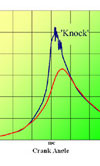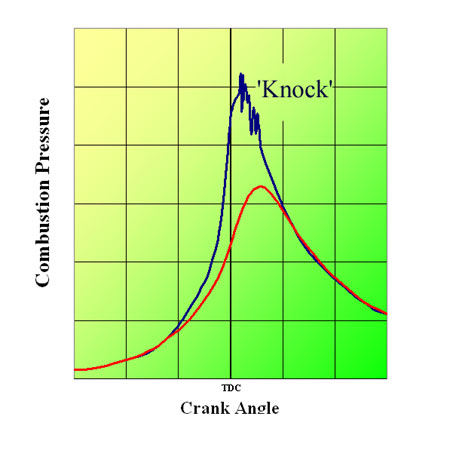'Knock' about
 Simply mention the words 'engine knock' to any aftermarket EMS supplier and I almost guarantee that the conversation will cease albeit perhaps only briefly. But safe to reiterate that 'knock' or more precisely detonation, should be avoided at all costs and that the engine should be mapped sufficiently away from these borderline conditions, the conversation will no doubt continue along the original lines. And in truth for the vast majority of race units, particularly naturally aspirated ones, careful ignition mapping and avoiding detonation at the low to medium speeds where it is most likely to occur, is all that is required. But for the rest of us who are continually striving to maximize the output (or best fuel economy) at all engine speeds, the control of combustion detonation is a high priority.
Simply mention the words 'engine knock' to any aftermarket EMS supplier and I almost guarantee that the conversation will cease albeit perhaps only briefly. But safe to reiterate that 'knock' or more precisely detonation, should be avoided at all costs and that the engine should be mapped sufficiently away from these borderline conditions, the conversation will no doubt continue along the original lines. And in truth for the vast majority of race units, particularly naturally aspirated ones, careful ignition mapping and avoiding detonation at the low to medium speeds where it is most likely to occur, is all that is required. But for the rest of us who are continually striving to maximize the output (or best fuel economy) at all engine speeds, the control of combustion detonation is a high priority.
As opposed to surface ignition (sometimes referred to as pre-ignition), combustion 'knock' is created from the spontaneous ignition of part of the end gas in the combustion chamber in advance of the flame front. Resulting from too much ignition advance for the conditions of temperature and pressure in the combustion chamber, uncontrolled, this phenomenon can be highly destructive and lead to almost instant engine failure because of the extremely rapid and localised increases in pressure in the chamber. When striking the cylinder wall, this can be heard as combustion 'knock'.
The frequency of this knock is engine dependent and more usually measured in kilohertz, while the intensity apparent to the outside world is very much down to the basic structure and stiffness of the cylinder block itself. Over the years, knock sensing technologies have been progressively developed and today rely on piezoelectric technology measuring the structure-born acoustic vibrations. For the best sensitivity this should be mounted where the cylinder block 'pants' the most. Initial surveys might suggest that this should be on the unsupported external wall of the cylinder jacket adjacent to each cylinder but when factoring in the metal boss to which the sensor is attached, this isn't always the best option. Also if only one sensor per bank is used, the position identified has to be a compromise for all the cylinders.

To help ease the problem, where EMS suppliers offer a knock control module as an extension to their ignition controller, the knock sensor tends to be 'gated' for each individual cylinder. This helps to eliminate any spurious engine mechanical noise (especially so in racing engines) and identifies the cylinder in question. Having identified the knocking cylinder, the module will then produce an analogue voltage output according to the knock intensity and the ignition retarded by an amount for that cylinder, as pre-programmed into the ECU. This could be as much as 8 or more degrees of ignition for heavy knock. Once that particular cylinder has stopped knocking, the ignition will be ramped back quickly in stages but the strategy used will depend on the individual engine developer and be jealously guarded. However, most knock control modules will enable detonation to be controlled on a number of levels at a wide range of engine rpm and load (or throttle) settings, but only the most sophisticated will enable the engine to re-learn and adapt the main ignition map to the revised values. This ensures that the engine will run at the optimum ignition advance at all times. For boosted engines some systems might also include a feedback loop to reduce the boost level before retarding the ignition.
When it comes to combustion control, the systems just become more and more complicated. So unless you have a large budget and a willingness to undergo all manner of grief, when the EMS supplier tells you to map clear of 'knock,' it might simply be wise to do so.
Fig. 1 - Combustion 'knock'
Written by John Coxon